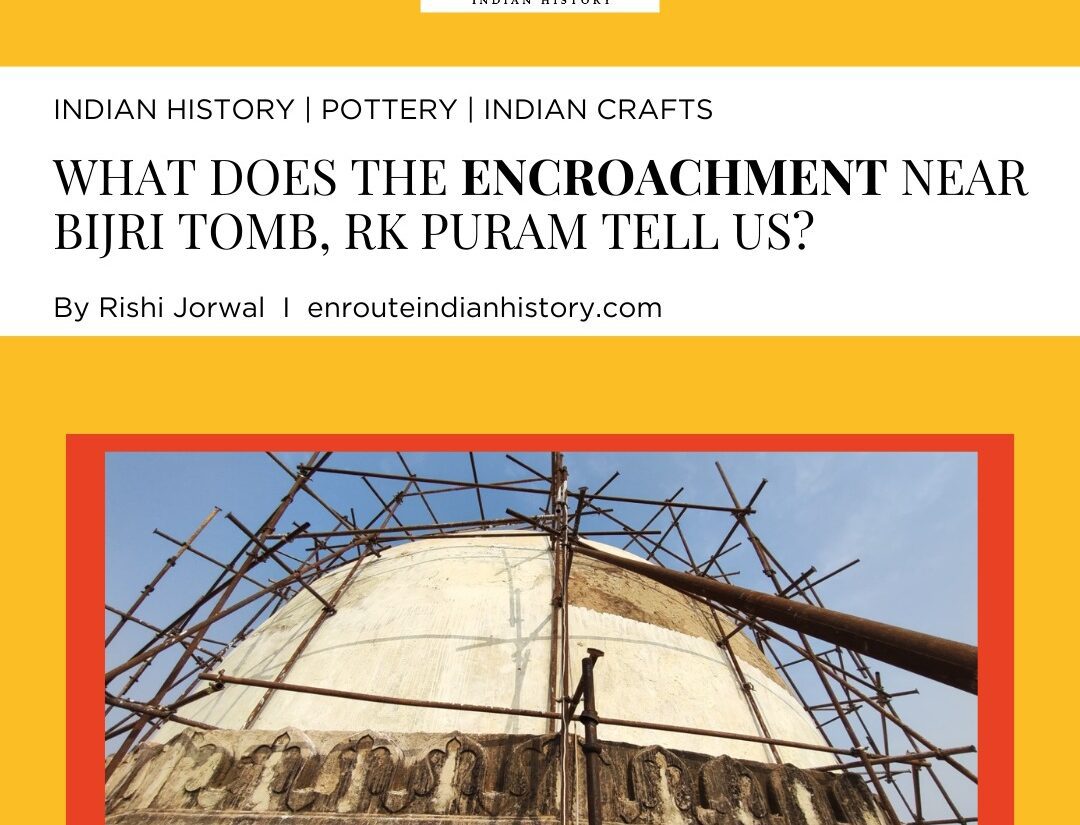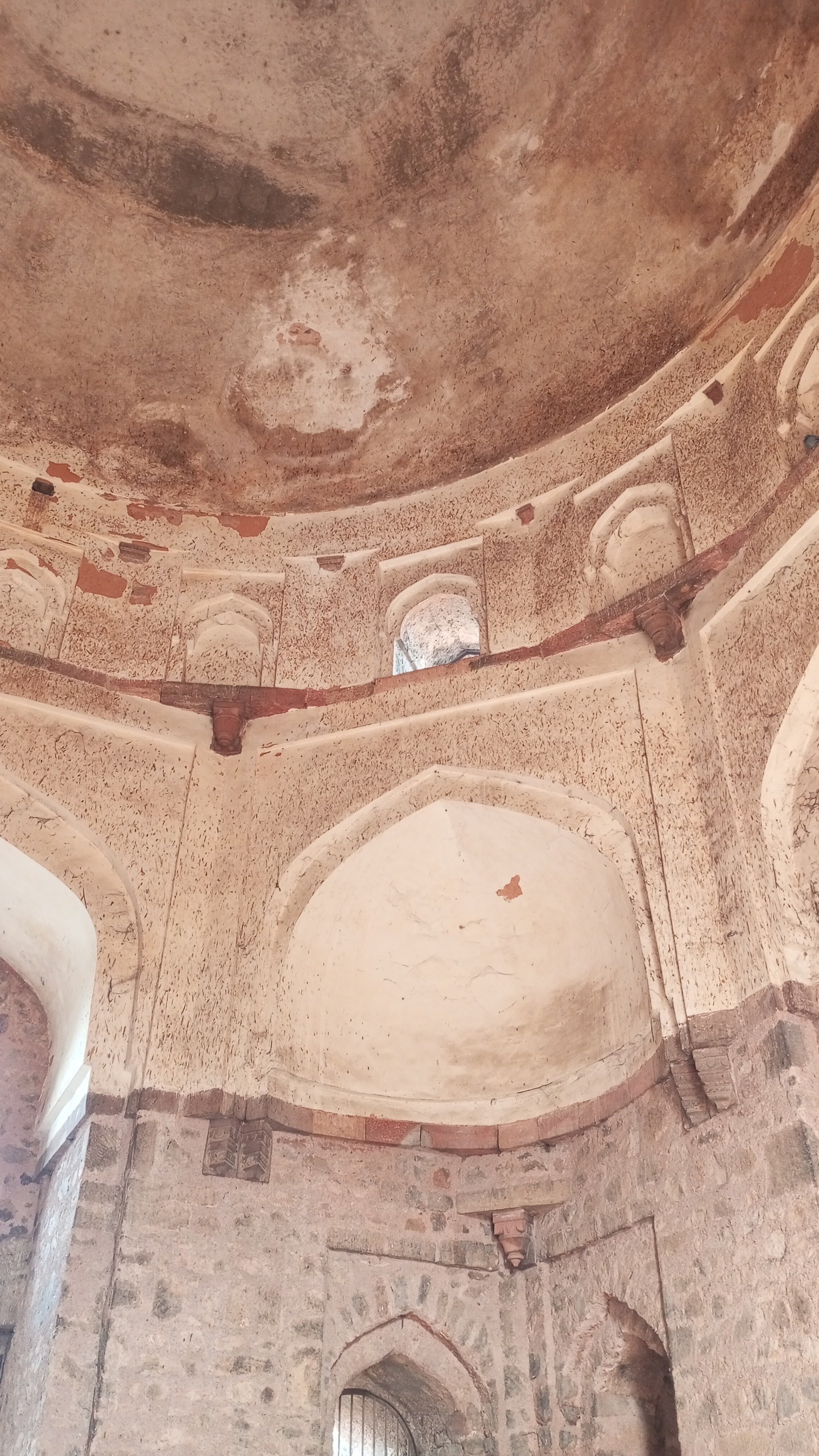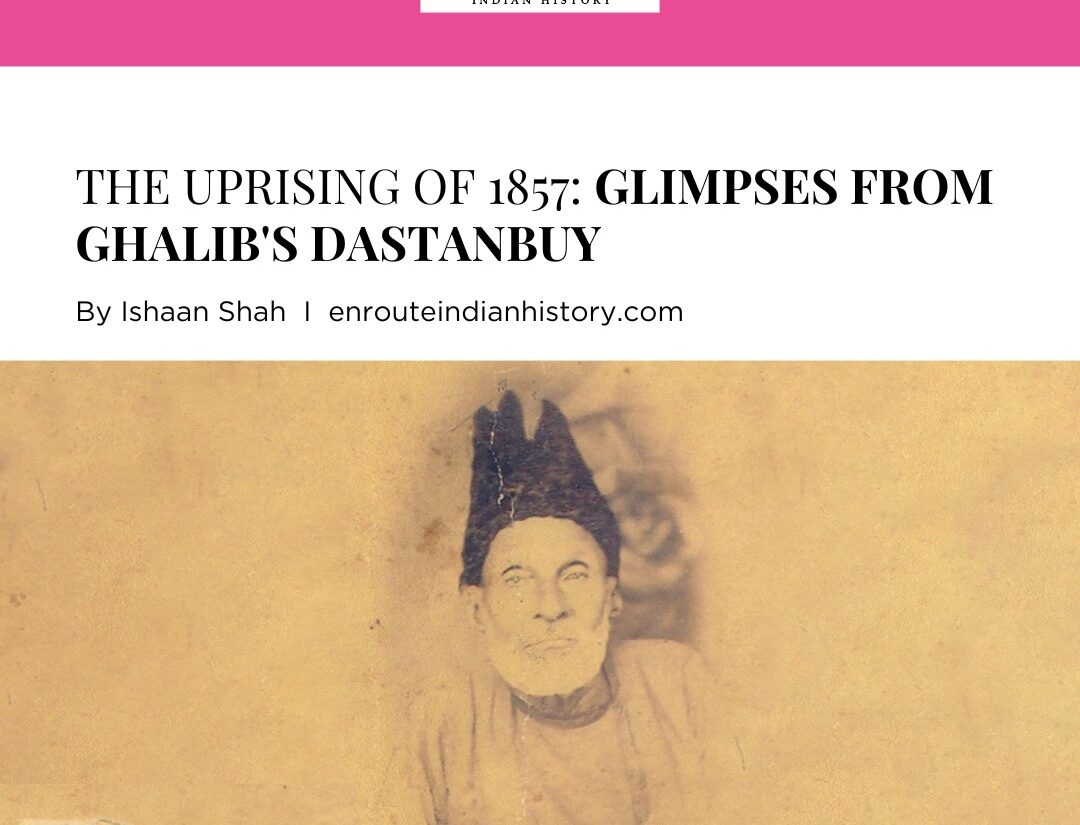What Does the Encroachment Near Bijri Tomb RK Puram tells us?
- EIH User
- January 23, 2024

The Story Of Encroachments On Our ‘Heritage Site

Slum area of RK Puram sector
The image that you see above was taken from the roof of a 500-year-old monument, The tomb of Bijri Khan. Even after having such a Large structure as his final resting place, Bijri Khan is unknown to the world. This is so because we have found no written inscriptions on the monument. Looking at the walls you witness the many layers of reparation that the building has gone through. The tomb is of a square shape with a dome placed over it, it has 2 entrances both of them having the ‘False-arch’. Sadly, the details and intricacies of the structure are now lost. The only we are sure of, when it comes to Bijri Khan is that this is his tomb and this was made during the Lodi period. Impressed by the size of the structure, some historians believe that he might be some prominent noble, but the claim has not been proven yet. In the south there’s another smaller tomb said to be of Tughlaq times.

Left : Northen Gate of the tomb (now closed), look at the false arch on the main entrance and the true arches above it.

Right : Inside view of the monument.
While inspecting the Roof and the dome, one can get a view of the area around it, across the road are the government quarters, as the Foreign Ministry’s office is just a kilometre away along with police branches. All of them were systematically built, and on the other side of the road, north of the monument you get to see a ‘Basti’. According to the report*1 published by ‘The Hindu’ in March 2021, the Culture Minister, Mr Prahlad Singh Patel told the upper house of the parliament that encroachments have been reported at 321 monumental and archaeological sites, including the Sun temple of Konark, Purana Quila of Delhi, Rakhgarhi in Haryana. The Times of India in one of their reports by Arundhati Basu on this issue, noted that “Bijri khan’s tomb lies in shambles”. Further adding to their concern, she reports that “sector 3 of RK Puram is in a serious state of despair”. Ratish Nanda, A conservation architect, remarks that legal action cannot be taken against the settlers as the site has not been declared ‘protected’ yet. Conservation architects believe that the structure has more architectural significance than a historical one. However, the encroachment is not the only thing that is damaging the monument. Even inside the monument, the insufficient attempt from the authorities’ behalf is also responsible. The smaller tomb that you read about in the article itself was converted into a room with a bed and a Mattress, probably for one of the labourers who is working there currently as once again the restoration work has started. It seems there’s no one present to prevent the monument from losing its historicity in the course of its reparations and renovations. This is not the fate of Bijri Khan’s tomb alone. The Basti area of Dargah Hazrat Nizamuddin Auliya is also going through something similar if not even worse. When one, instead of entering the shrine, walks towards the slums ignoring the shopkeepers asking you to buy flowers, ‘chadar’, and ‘iftar’ (perfume) he enters the basti area, right in front of him there’ll be something that looks like a park, soon a board put on ASI appears declaring the place protected as it has several graves. However, the board has failed in its purpose to protect the place as the locals use the place as a goat barn. No matter which lane one chooses to enter he/she will end up finding a grave in them, some used for parking Bikes and Bicycles others as storerooms. Some of them are even made up of marble and have intricate ‘jali’ work around them. One of the residents claimed that the officials often try to dig up the grave and work like road construction and pipeline works.
In their research work*2, Arnab Gantait1, Priyakrushna Mohanty2 and G. Anjaneya Swamy3 defined Heritage Management and Conservation as a process that involves proper maintenance, and protection from being shattered or restoration without proper management, control, and appropriate methods.” The Bijri Khan’s tomb has witnessed the dire consequences of not taking care of the second half of the above definition. Yet another report*3 from ‘The Frontline’ puts the case of Barakhamba cemetery in front of us. Shockingly, a whole Afghan-era graveyard is lost, even though ASI tried to locate the place it is unlikely that they’ll be able to find it. The Minister of Culture under which ASI is housed told the parliament that 3693 monuments have gone missing so far, the ministry was committed to “ finding” these monuments but it might not always be possible in the case of the Barakhamba cemetery. He further blames the theft of bricks, pillars, sculptures and carved beams by the locals. To prevent all this from escalating further, the Union Government has brought in the AMASR Act, which prohibits construction up to 100 metres around protected monuments except under certain conditions. Further, the area up to a 200-metre radius beyond the protected area is demarcated as the regulated area. Ruchika Sharma, a Professor of history at the University of Delhi thinks that the AMASR Amendment fundamentally violates the basis of the act by allowing construction.
References:
*1- Parliament Proceeding, encroachment at 321 monumental site- Culture Ministry,
The Hindu, March 23, 2021
*2- ‘Conservation and Management of Indian Built Heritages : Exploring the Issues
and challenges’ by Arnab Gantait, Priyakrushna Mohanty, G. Anjaneya Swamy,
Jannuary, 2018. Source – Jstor
*3 – ‘Missing’ monuments of India tell a tale of neglect, The frontline,
Published – May 18th, 2023
^1 Arnab Gantait – Research scholar, Department of Tourism Studies, Pondicherry
University, Puducherry, India.
^2 Priyakrushna Mohanty – Research scholar, Department of Tourism Studies,
Pondicherry University, Puducherry, India.
^3 G. Anjaneya Swamy – Dean and Professor, School of Management, Pondicherry
University, Puducherry, India.























